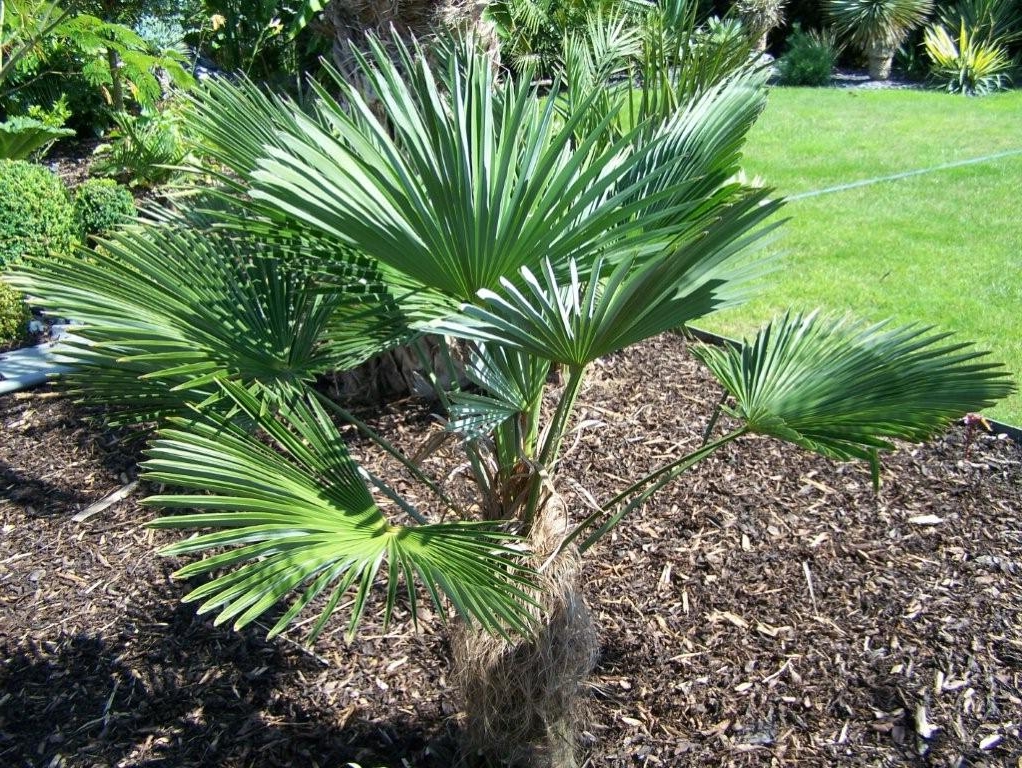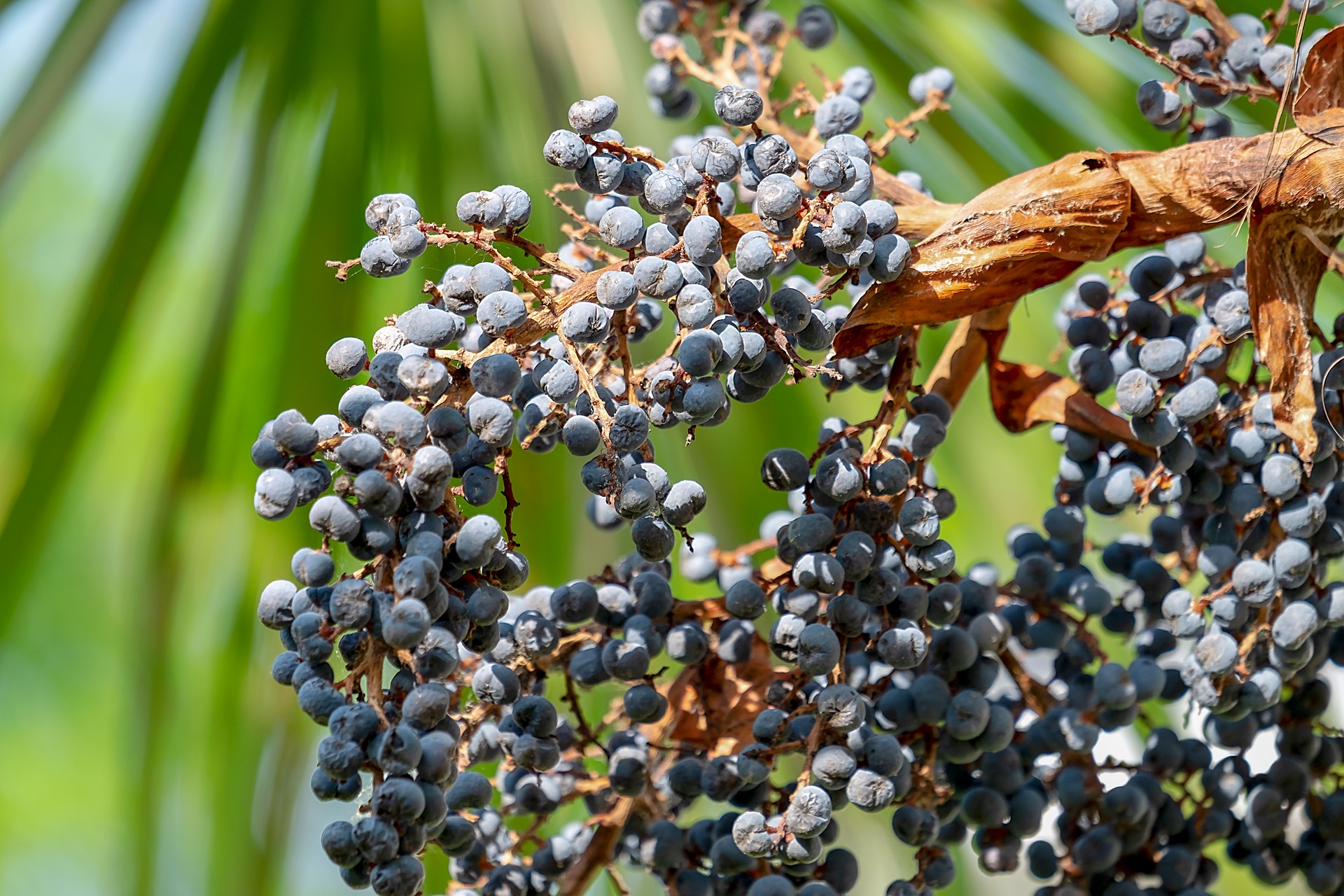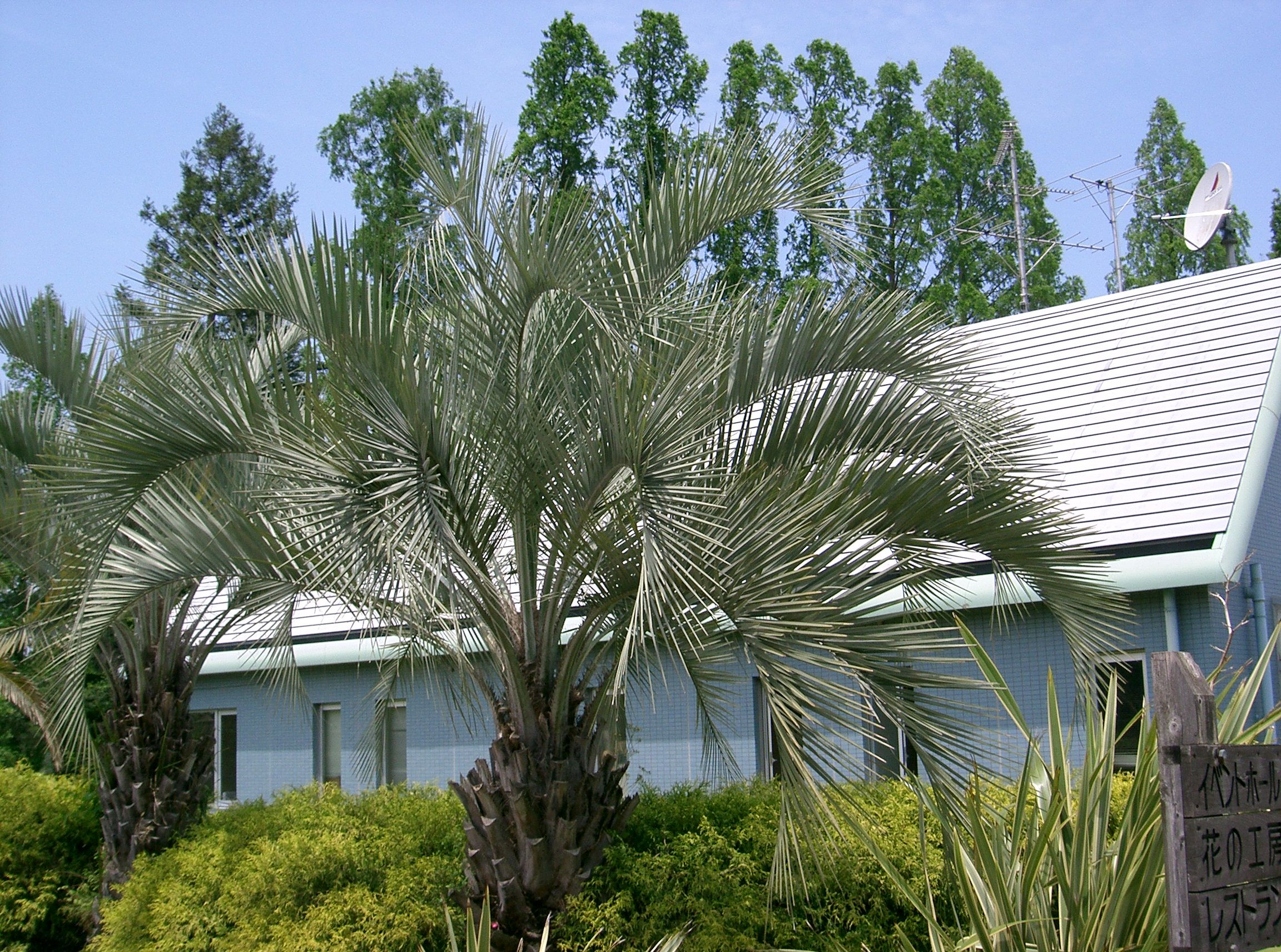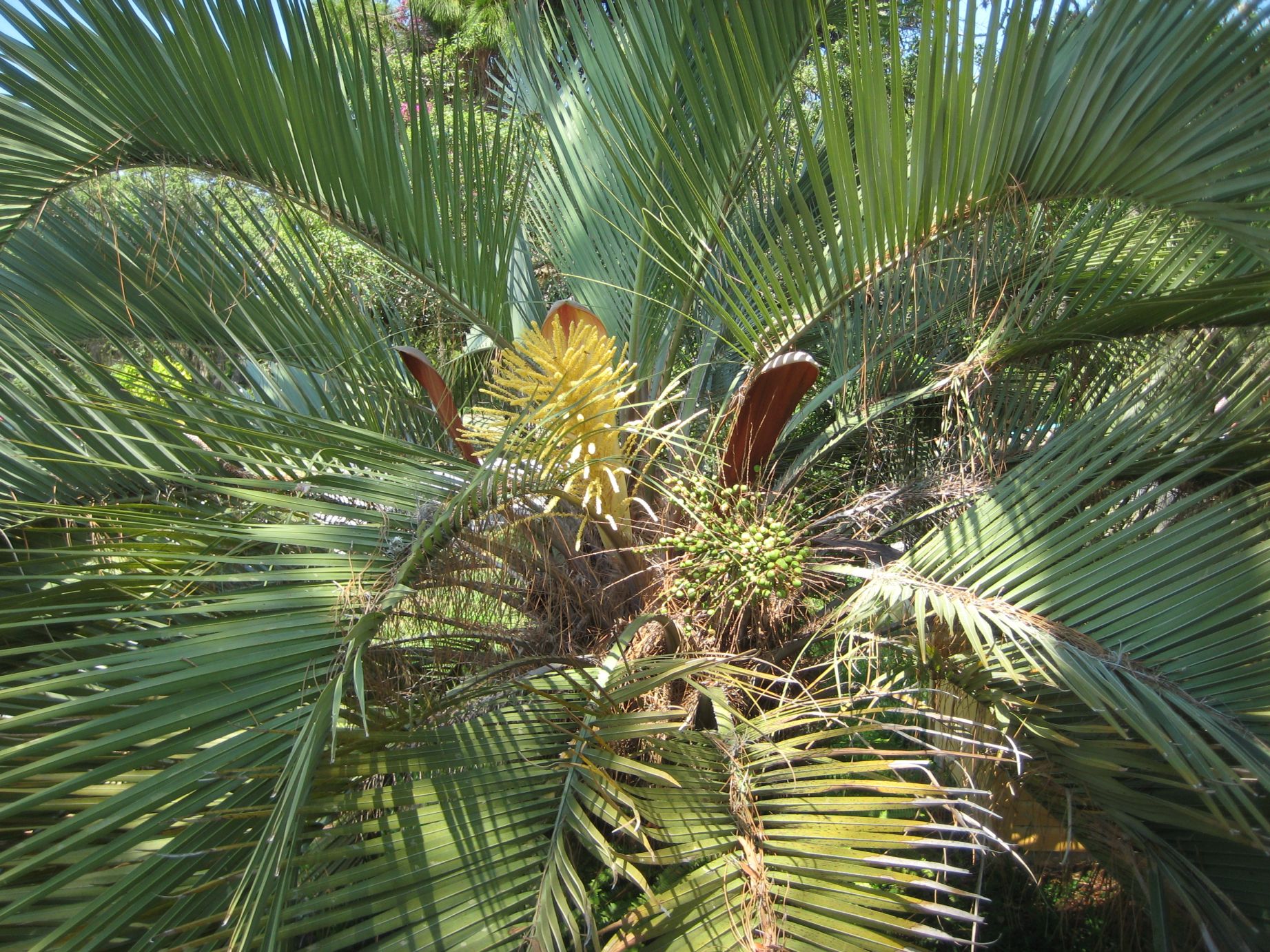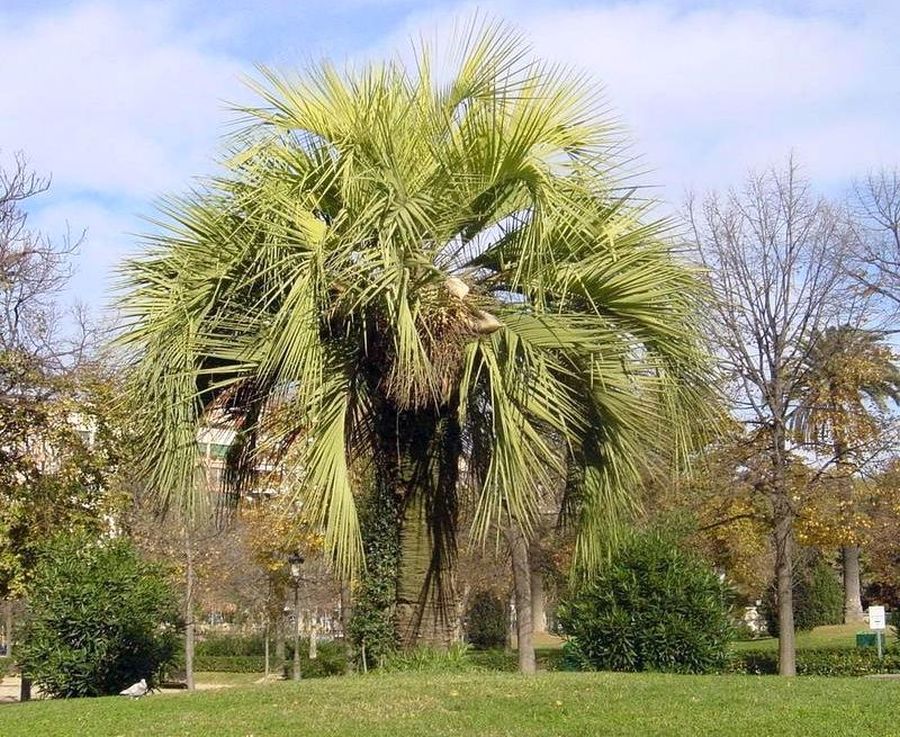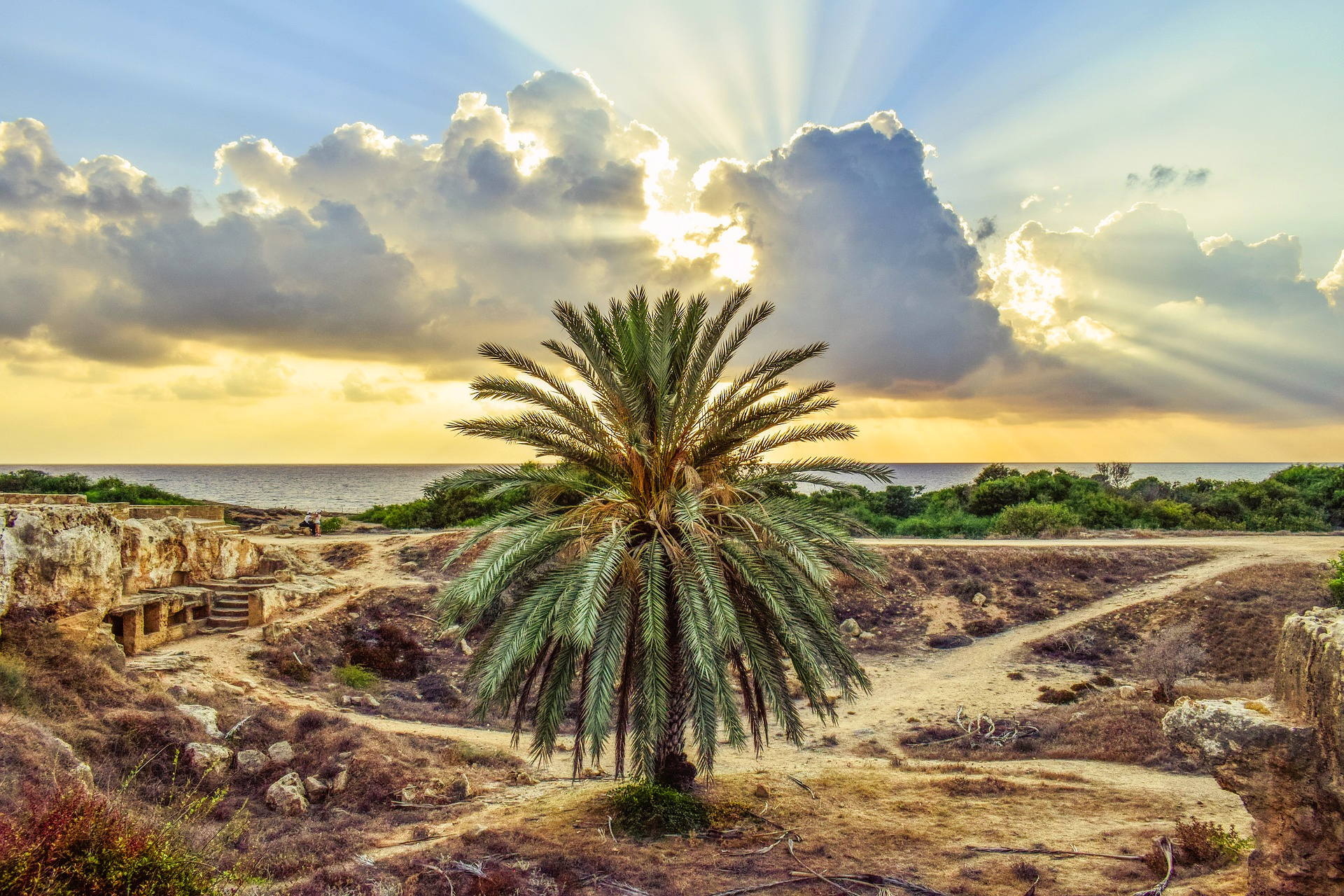Leipzig Palms Cultivating Livistona Fan Palms
Leipzig Palms cultivating Livistona chinensis. With a special palm greenhouse we can cultivate also other famous tropical or subtropical palms in future.
Livistona is a genus of palms (family Arecaceae), native to southern, southeastern and eastern Asia, Australasia, and the Horn of Africa. They are fan palms, the leaves with an armed petiole terminating in a rounded, costapalmate fan of numerous leaflets. Livistona is closely related to the genus Saribus, and for a time Saribus was included in Livistona. Recent studies, however, have advocated separating the two groups.
Chinese fan palms (Livistona chinensis) have larger fan-shaped fronds than their close relatives, the Australian fan palms (Livistona australis). Pronounced are the overhanging leaf tips that have earned the nickname “fountain palm” for these world-famous palm trees, also called Lifingston palms or Livstonien, are among the fan palms: they have round fronds whose edges are cut to about two-thirds of their maximum 1 m in diameter and are thus unfolded in many tips. The strains are quite slender compared to other fan palms, the annual increase is moderate. The Trunk is up to 15 m tall, 20-30 cm in diam. breast high, leaf scars obscure, roughened and with remnant tissue, light coloured, internodes narrow, irregular, brown to grey with age, petiole stubs not persistent, longitudinal fissures prominent. In their Eastern Australian home, these umbrella palms grow in humid rainforests on always moist soil. Accordingly, they appreciate in this country sunny to partly sunny places with regular watering. They tolerate short-term frost.
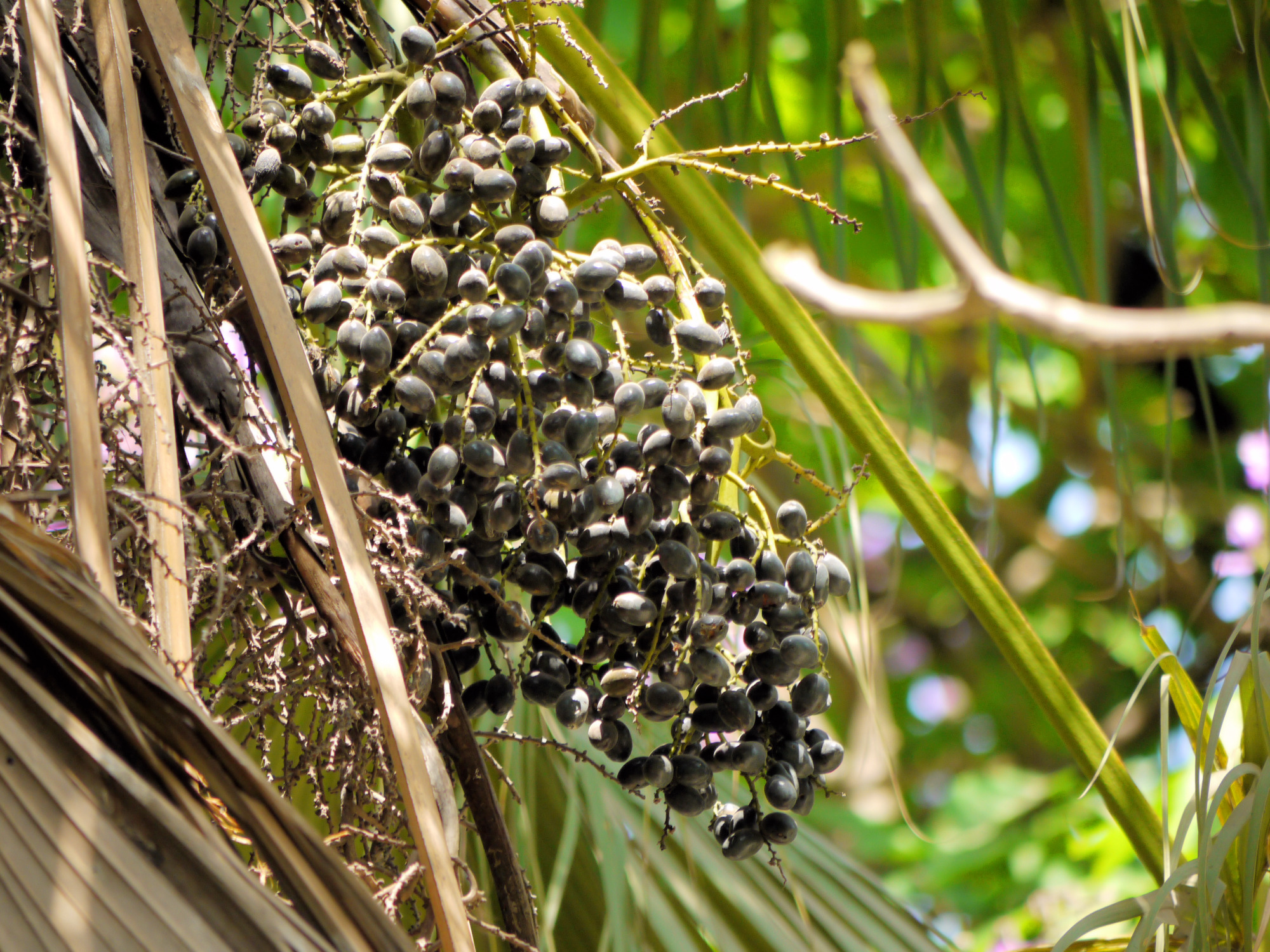
The Chinese fan palm is not particular about soil. Fertilize twice a year in spring and summer with a good quality slow release fertilizer that contains micro-nutrients. Light: fLikes direct sun and bright situations. Young plants look better when grown in part shade. Moisture: This palm forms a long tap root and can survive extended periods of drought. Provide adequate moisture for more rapid growth. This palm may be hardier than Zone 8. Sheltered some palms survived temperatures as low as 15 degrees. They also seem resistant to the fungus diseases that attacked other “semi-hardy” palms after sustaining cold damage. Propagation: By seed. If kept warm they will germinate in about 2 months time. USDA Hardiness, zone: 9B.
Livistona chinensis; the genus is named for the baron of Livingston and the species name chinensis is Latin for ‘of China’.
There are following species:
Livistona alfredii F.Muell. – Australia: Western Australia
Livistona australis (R.Br.) Mart. – Cabbage-tree Palm – Australia: New South Wales, Queensland, Victoria
Livistona benthamii F.M.Bailey – Australia: Queensland, Northern Territory; New Guinea
Livistona boninensis (Becc.) Nakai – Bonin Islands
Livistona carinensis (Chiov.) J.Dransf. & Uhl – Djibouti, Somalia, Yemen
Livistona chinensis (Jacq.) R.Br. ex Mart. – Chinese Fan Palm – Japan: South and Ryukyu Islands, China: Guangdong, Hainan, Taiwan; naturalized in South Africa, Java, New Caledonia, Hawaii, Micronesia, Florida, Dominican Republic, Bermuda, Puerto Rico, and various island in the Indian Ocean
Livistona concinna Dowe & Barfod – Australia: Queensland
Livistona decora (W.Bull) Dowe – Australia: Queensland
Livistona drudei F.Muell. ex Drude – Australia: Queensland
Livistona eastonii C.A.Gardner – Australia: Western Australia
Livistona endauensis J.Dransf. & K.M.Wong – Peninsular Malaysia
Livistona exigua J.Dransf. – Brunei
Livistona fulva Rodd – Australia: Queensland
Livistona halongensis – Ha Long Bay Islands in Vietnam
Livistona humilis R.Br. – Australia: Northern Territory
Livistona inermis R.Br. – Australia: Northern Territory, Queensland
Livistona jenkinsiana Griff. – Bhutan, India: Arunachal Pradesh, Assam; Myanmar, Thailand, China: Hainan, Yunnan
Livistona lanuginosa Rodd – Australia: Queensland
Livistona lorophylla Becc. – Australia: Northern Territory, Western Australia
Livistona mariae F.Muell. – Central Australian Fan Palm – Australia: Northern Territory
Livistona muelleri F.M.Bailey – Australia: Queensland; New Guinea
Livistona nasmophila Dowe & D.L. Jones – Australia: Western Australia
Livistona nitida Rodd – Carnarvon Fan Palm – Australia: Queensland
Livistona rigida Becc. – Australia: Northern Territory, Queensland
Livistona saribus (Lour.) Merr. ex A. Chev. – Indochina, Malaysia, Borneo, Java, Philippines; naturalized in Polynesia, China: Guangdong, Yunnan
Livistona speciosa Kurz – Kho – Myanmar, Thailand, Vietnam, Peninsular Malaysia, Bangladesh, southern China
Livistona tahanensis Becc. – Pahang in Malaysia
Livistona victoriae Rodd – Australia: Western Australia, Northern Territory
Source: Palmpedia, Wikipedia




